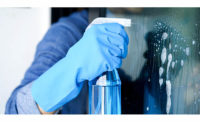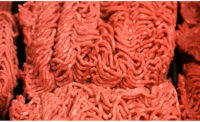For years, experts and analysts have predicted a future in which artificial intelligence (AI) and machine learning would revolutionize the industry. By all indications, the future is here.
Broadly speaking, AI refers to the ability of a machine to carry out a task that requires some level of thinking. Machine learning refers to a process in which massive data sets are fed into algorithms for the purpose of identifying patterns that allow a machine to improve its performance over time.
AI and machine-learning applications are already deployed throughout the meat and poultry processing industries to improve sanitation, safety, sorting, product development and connecting customers with products. For example, there is an AI food-safety application that uses cameras, along with and facial and object-recognition technology, to monitor whether workers are complying with PPE requirements. When the AI identifies an employee who is not wearing a mask, the system takes a photo of the person and sends it, along with that person’s identity, to a supervisor. While remarkable, this is only the tip of the iceberg.
Soon, companies will be able to optimize everything from line speeds to production schedules to the use of packaging materials and plan shipping routes, all while reducing waste, improving safety and increasing the bottom line. Similarly, advancements in robotics are allowing machines to complete complex manual tasks faster than any human, and the efficacy of these robots will continue to improve exponentially.
From a legal standpoint, the possibilities are both intriguing and concerning. On the one hand, the ability of these technologies to make both products and workplaces much safer is certainly welcome. Reducing foodborne illness and employee injuries will benefit everyone (except perhaps the plaintiff lawyers). These benefits will improve the customer experience and increase profits by reducing the number of recalls and litigation.
There are, however, many unanswered questions, and evolving technology may begin to rapidly outpace our ability to respond. Companies would be well served to begin addressing these issues now.
Consider the case of an autonomously operated truck carrying thousands of pounds of meat products. The truck was loaded by a robot programmed to maximize the number of boxes without exceeding the truck’s weight limit. The products in the boxes were packed by a different robot, which was programmed to minimize the amount of free space in each box. After leaving your facility, the truck unexpectedly encounters a person walking across the street. The truck swerves to miss the person, and in doing so, a few boxes collapse. That, in turn, causes the load to shift and become unbalanced, which causes the truck to flip over, destroying the product.
Who is liable? It could be the manufacturer of the truck, the programmer of the truck’s software, the owner of the truck, the owner, manufacturer, programmer of either of the robots or any number of others along the chain. Without a doubt, each potentially liable entity will blame the others, and the technological complexity involved in identifying which bit of code was causative would make doing so nearly impossible. Thus, it may be impossible to recover your losses.
There is no end to the number of such scenarios that could potentially occur. Yet, as of now, our legal system is woefully unprepared to adjudicate these matters, and there is no procedure in place to effectively assign liability in the case of a loss caused by malfunctioning AI technology.
To that end, as companies in the meat and poultry industries adopt and implement these exciting new technologies — which will certainly offer many extraordinary benefits — it will be important to also consider novel ways to shift the risks of loss. In most cases, this can be effectively accomplished through contracts or insurance, provided it is done before the loss occurs.
If you are relying on AI, make sure your company is protected. NP





Report Abusive Comment